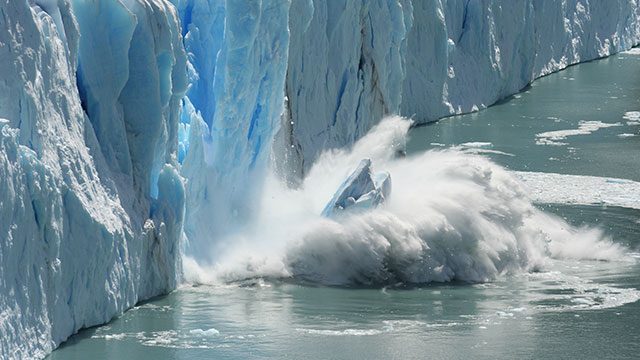SUMMARY
This is AI generated summarization, which may have errors. For context, always refer to the full article.

WASHINGTON DC, USA – Global sea levels could rise by two meters (6.5 feet) and displace tens of millions of people by the end of the century, according to new projections that double the UN’s benchmark estimates.
The vast ice sheets of Greenland and Antarctica contain enough frozen water to lift the world’s oceans dozens of meters. The expansion of water as oceans warm also contributes to sea level rise.
But predicting the rates at which they will melt as the planet heats is notoriously tricky.
The United Nations’ Intergovernmental Panel on Climate Change (IPCC) said its 2013 Fifth Assessment Report that under current emissions trajectories – a “business-as-usual” scenario known as RCP8.5 – would likely rise by up to one meter by 2100.
That prediction has since been viewed as conservative, as the levels of planet-warming greenhouse gas emissions continue to rise year on year, and satellites showing accelerated rates of melt-off from massive ice sheets atop Antarctica and Greenland.
A group of the world’s leading ice scientists this week released an expert judgement on the situation, drawing on their own experience and observations.
While there was still a significant margin of error, they found it “plausible” that under the business-as-usual emissions scenario, sea-level rises could exceed two meters by 2100.
The authors said the area of land lost to the ocean could be equivalent to that of France, Germany, Spain and Britain combined and would displace more than 180 million people.
“A sea-level rise of this magnitude would clearly have profound consequences for humanity,” they said.
‘The true risks’
The Paris climate deal, struck between nations in 2015, aims to limit global temperature rises to well below two degrees Celsius (3.6 Farenheit), and encourages countries to work towards a 1.5ºC cap.
In October the IPCC released a landmark climate report that called for a drastic and immediate drawdown in coal, oil and gas consumption in order to arrest the rapid rise in the levels of greenhouse gases in the atmosphere.
That report, however, did not include revised estimates of sea level rise.
Earth has already heated 1ºC since pre-industrial times, contributing roughly 3mm to sea levels each year.
The authors of the new study, released Monday, May 20, in the journal Proceedings of the National Academy of Sciences, argue that the IPCC’s sea-level rise prediction was too constrained by focusing on what was “likely” to happen.
At wider probabilities – 5-95% likelihood – they found that under 2ºC of warming seas could rise 36-126 cm by 2100.
In world that has warmed by 5ºC – unlikely but certainly not impossible given projected fossil fuel demand in the coming decades – they calculated a 5% risk of sea levels surpassing two meters higher, topping out at 238 cm.
Willy Aspinall, from the University of Bristol’s School of Earth Sciences, said he hoped the study could provide policymakers with a more accurate worst-case scenario “crucial for robust decision making.”
“Limiting attention to the ‘likely’ range, as was the case in the IPCC Fifth Assessment Report, may be misleading and will likely lead to a poor evaluation of the true risks,” he added. – Rappler.com
Antarctic melting glacier image via Shutterstock
Add a comment
How does this make you feel?
There are no comments yet. Add your comment to start the conversation.